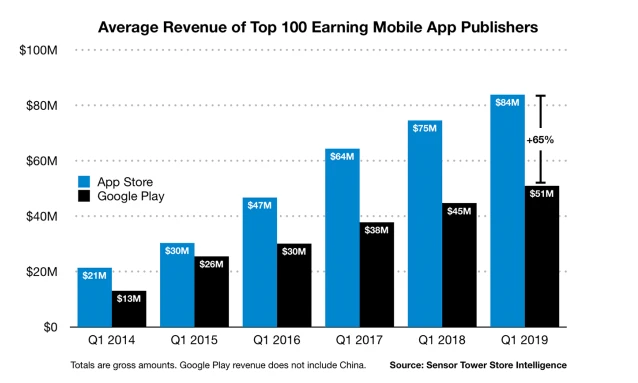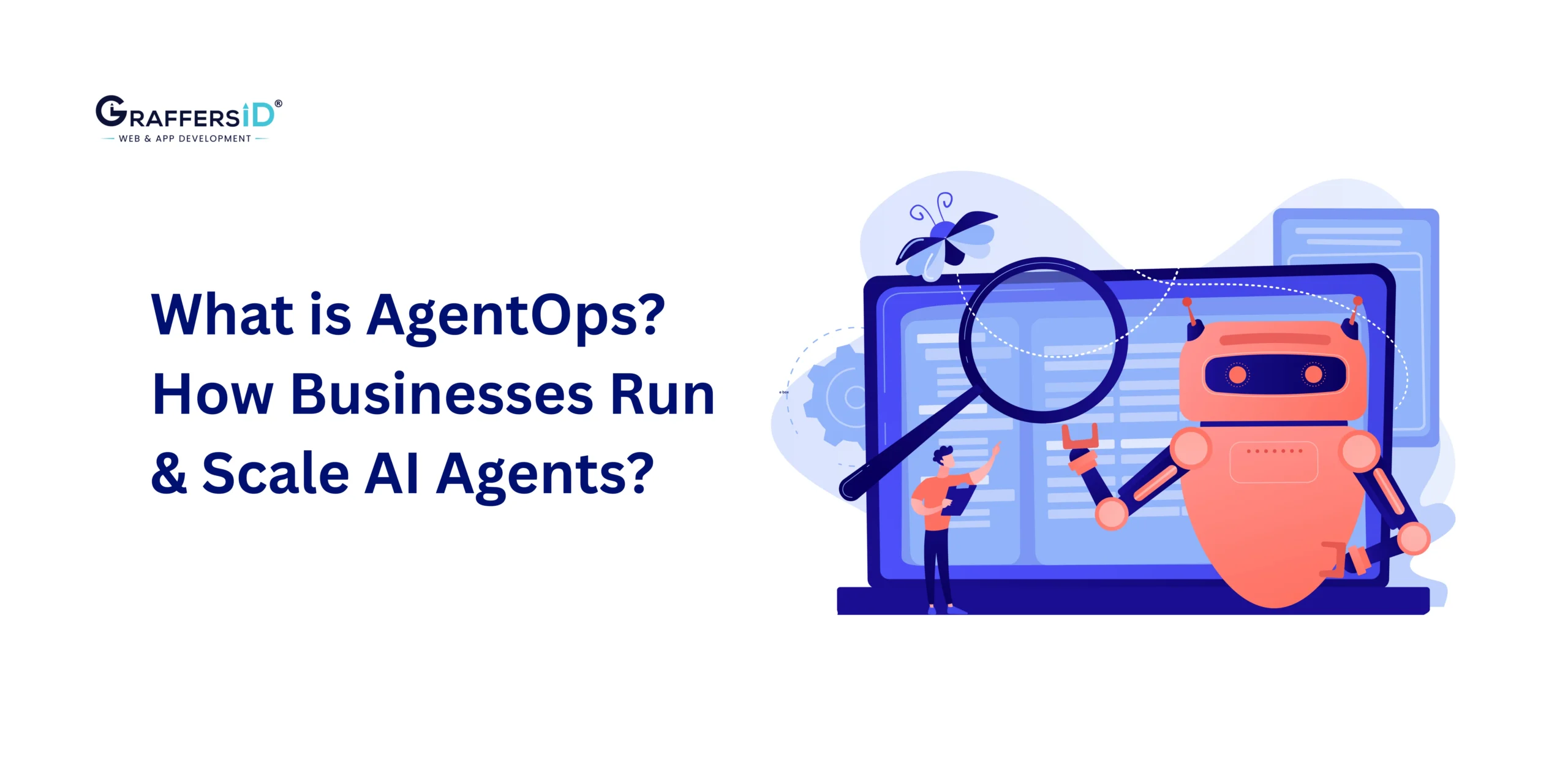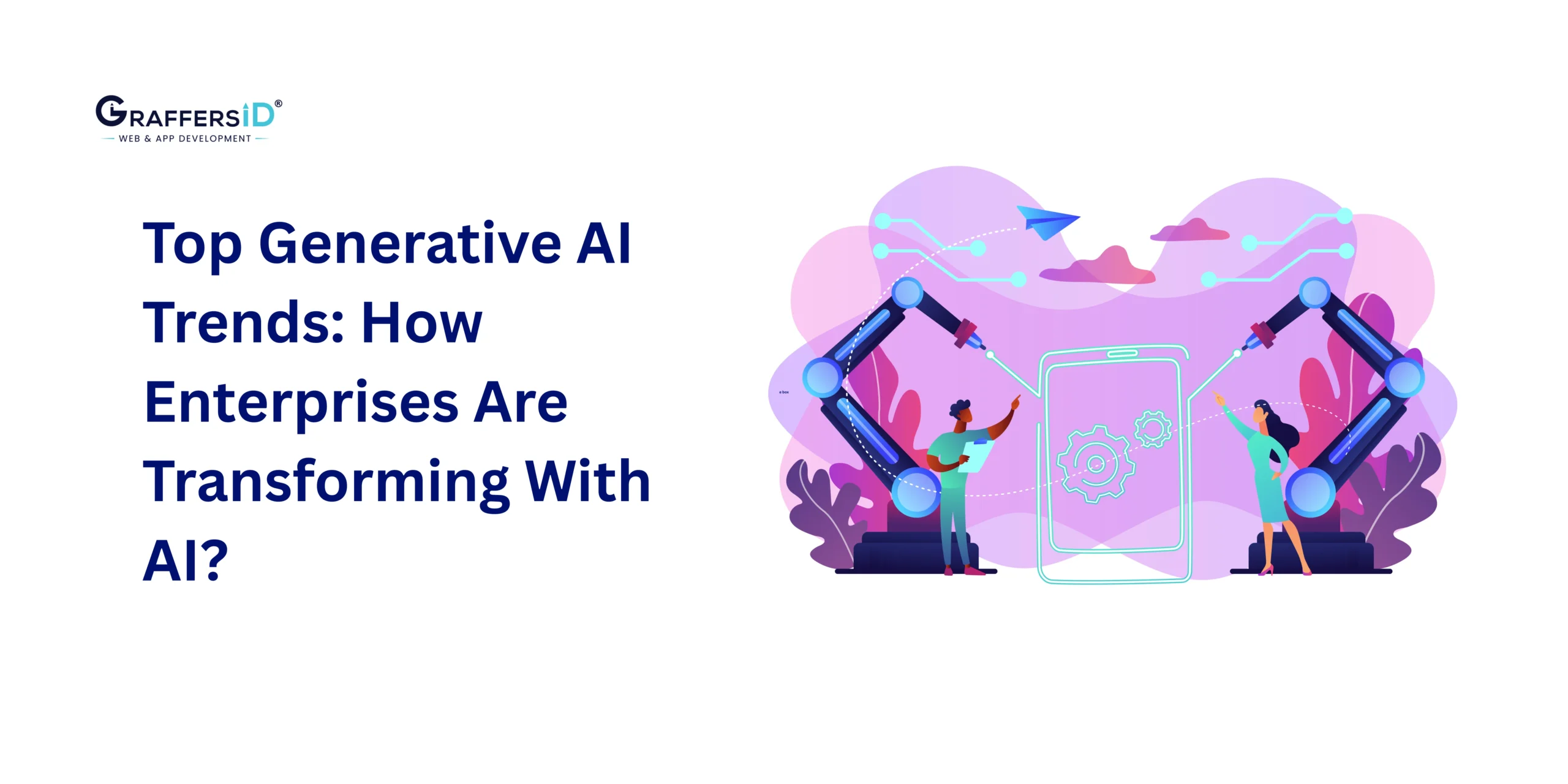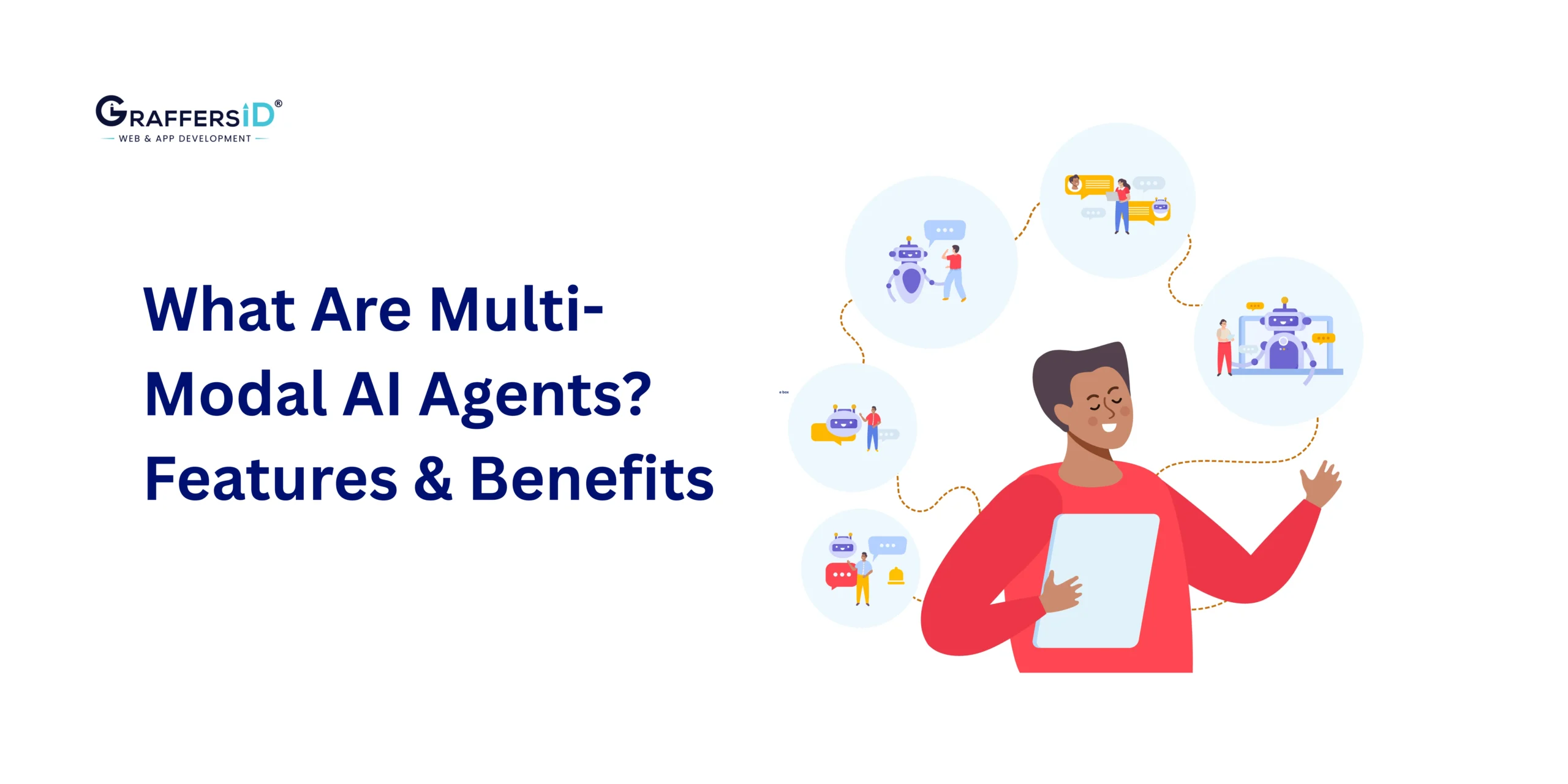At first, you will think it is a silly question. There are a plethora of online tutorials and how-to guides that provide you with app development insights. Then, what is the requirement of another blog? Well, it is not as easy as it appears to create an App for iPhone.
Developing an app for the iPhone is like a hard row to tow. You get puzzled at every step and may even find yourself between questions like- Do I need a Mac? What is swift and objective-c? And the list of questions continues.
Do you know that often a developer follows just one set of commands instead of knowing that there is a loophole in it? Well, in this blog we would like to educate about the loopholes to look after and ways to succeed. There are a plethora of offshore app developers who can help you with the same.
Which is better iOS or Android?
There has been a simmering debate about what to prefer for app development, iOS or Android. According to research, a study calculated the total number of apps in AppStore. And, when you read the number you are sure to be astonished. In today’s date, there are more than 1.7 M apps found on the AppStore.
And, if the recent studies are to be believed then the app store generated about $15 Billion in sales, which is approximately half more than that of the Play Store. Therefore, creating an application for the app store or iOS can be profitable. And, to create a successful one, we need to follow some pieces of advice and guides.
But, the first and foremost question that we need to ask ourselves is the right process to hire a developer.
Four ways could help you in developing an iPhone app-
- DIY or Do it Yourself
- Hire hourly based developers
- Hire in-house developers
- Remote-based dedicated developers
DIY
It is the most common process of developing an app if you have a tight budget. You can create an app for yourself, but for that, you should have a deep understanding of the technology stack used.
The first thing you need is solid information about the iOS programming languages such as Swift, coding logic as well and the architecture of an app. And, before that, you should figure out the UI/UX design as well.
Hourly based developers
You can hire a developer just for the sake of the project completion. He will work on the project until it is not completed. And, you need to keep the communication in check as well as set the deadlines right. It is because certain things such as the deadline of the project and the communication should be properly emphasized.
Create and hire your in-house team
You can hire your developers and even train them to accomplish certain tasks. The best part is zero communication obstacles as well and you can keep an eye on them always.
Today, the time is such that there has been a lot of difficulty in managing the in-house team too. And, this is because even the in-house team has become a remote team.
Remote developers
At times, it has happened that you may lose a great employee just because of the physical restraints. But with the concept of the remote team, you can hire dedicated remote developers and create your dream team.
We have witnessed and already instilled our hopes in the outsourcing realm. The known examples that have risen to fame due to the outsourcing concept are as follows-
- Alibaba- They opted for the website outsourcing development
- Whatsapp- They developed their messenger’s iOS version via an outsourcing team.
- GitHub- Outsourced the back end of their website.
- Slack- The company outsourced the entire design layout of its website.
Moreover, if you are a startup and looking to create a Minimum Viable Product then you can opt for outsourcing. And, if you are worried about how to find the right talent, fret not, because there are well-developed outsourcing teams who have in-house talent ready.
Read Also: Benefits of Hiring Dedicated Developers
Understand Your Target Market
Well, it is often the most neglected process in the entire app development process. If you have zero idea about who will be your target market, you cannot create a successful app. Therefore, take time to study the target market. And, the information that is collected will give you tips that help you to understand the app creation process in a better way.
Competitor analysis
Please find some effective ways to do the competitor analysis and the same are as follows-
- Explore the app store- Thoroughly search for the apps, analyze the apps that are of similar pattern and examine for the loopholes, which helps them lure the target audience.
- Read the reviews on the Apple Store/Play Store– The reviews can give you correct insight into what is an app all about.
- And, finally, pen down the notes and offerings– Jot down the important piece or a value-added service that can help you get an idea about creating that one successful app.
Sketch the perfect app idea
This section comprises the need to understand and create a particular type of app. Determine what will your app specialize in. What are your apps offering? And, what will be your main market?
Once you understand and finalize this the rest of the process becomes very easy. And, no matter what do not fret. Your app type or idea doesn’t have to be big or groundbreaking. Just keep your idea tangible.
Define your target audience-
This is another important step that determines your overall app development process. Let’s start with some important pointers-
1. Age- It is one of the important criteria, suppose you want to offer scholarly guidance, then an adult who is working as a mechanic will do no good.
2. Location- The language, timeline of ads sponsored and the offers may depend a lot on the location of your app.
3. Interests- If your app provides offers and discounts on food and the best recommendations in a particular place, then you should seek and target an audience who loves to try new places. And, this can be done when your app user logs in through Facebook. It will read their data and suggest referrals about the same.
Monetization
Monetization is one of the hardest processes today. And, to achieve the same we can keep in mind the following-
- In-app advertising- It means though your app is free it comes with some added features.
- Freemium model- The app is free but some of the contents of the same aren’t.
- Subscription model- The main part of the app is only available once you subscribe to it.
- Paid model- After a one-time purchase, the app is readily available for use.
- Paymium model- It is a combination of two different models. The app downloaded is after it is paid but the additional content may have an option to buy or not.
Technological Stack Required to Create an App for iPhone-
1. Programming Languages- Objective-C, Swift
Why opt for Swift?
Swift is known to be highly functional and is considered to have a dynamic library and therefore offers an error-proof code. And, this is done due to its strong inline support.
On the other hand, Objective-C is a high-programming language that is based on C. It offers project-oriented capabilities as well as a dynamic routine environment.
2. Integrated Development Executive- Xcode
3. Software Development Kit (SDK)- IOS SDK
4. Popular tools available- Xcode, App code, Atom
Read Also: Here is The Best Tech Stack for Exceptional Mobile App Development
What programming language should I learn to create iPhone apps?
Creating iPhone apps is an exciting endeavor that can lead to a world of possibilities, from building a successful business to realizing your creative vision. However, one of the most crucial decisions you’ll face when embarking on this journey is selecting the right programming language. The choice of programming language can significantly impact the development process and the ultimate success of your iPhone app. In this blog post, we’ll explore the various programming languages available for iOS app development and help you make an informed decision.
-
Swift:
Apple introduced Swift in 2014, and it quickly became the primary programming language for iOS app development. Swift was designed with ease of use, safety, and performance in mind. Here are some reasons why Swift is a popular choice:
-
Performance: Swift is known for its speed and efficiency, thanks to its modern syntax and optimization techniques. It’s designed to take full advantage of Apple’s hardware, resulting in faster app execution.
-
Safety: Swift incorporates safety features that help prevent common programming errors. This reduces the likelihood of crashes and makes it easier to write reliable and bug-free code.
-
Interoperability: Swift is designed to work seamlessly with Objective-C, which is the older programming language used for iOS development. This allows you to leverage existing Objective-C code in your Swift projects.
-
Active Development: Apple continues to actively develop and improve Swift, ensuring that it remains a cutting-edge choice for iOS app development.
-
Objective-C:
Objective-C was the dominant language for iOS app development before Swift’s arrival. While it may not be the first choice for new projects, it still plays a significant role in the iOS ecosystem. Here are some reasons to consider Objective-C:
-
Legacy Code: If you have an existing Objective-C codebase, or you’re working on a project that requires interaction with older libraries, Objective-C is a necessary skill.
-
Longevity: Some older apps still use Objective-C, and maintenance of these apps may require knowledge of this language.
-
Cross-Platform Options:
If you have aspirations of developing apps for multiple platforms, you might consider cross-platform development tools. Two popular options are:
-
React Native: Developed by Facebook, React Native allows you to build iOS and Android apps using a single codebase. It uses JavaScript and offers a rich ecosystem of pre-built components.
-
Flutter: Created by Google, Flutter is a framework that lets you build natively compiled applications for mobile, web, and desktop from a single codebase. It uses the Dart programming language and has gained popularity in recent years.
-
Other Options:
There are several other programming languages you can use to develop iPhone apps, though they may not be as common or well-supported as the ones mentioned above. These include:
-
Python: With tools like Kivy and BeeWare, you can develop iOS apps using Python. However, performance and app store restrictions may limit its suitability for certain projects.
-
C#: Xamarin, now a part of Microsoft, allows you to build iOS apps using C#. It’s a good choice if you’re already familiar with C# and want to target multiple platforms.
How much does it cost to develop an iPhone app in 2024?
As we step into 2024, the costs associated with iPhone app development have undergone significant changes, influenced by advancements in technology, market trends, and the growing demand for seamless user experiences.
Here are the break down the expenses based on different types of apps:
-
Simple Apps (e.g., basic utility or informational app):
- Development Cost: $15,000 – $50,000
-
Moderate Complexity Apps (e.g., social networking or e-commerce app):
- Development Cost: $50,000 – $150,000
-
Highly Complex Apps (e.g., on-demand services, gaming, or AI-driven apps):
- Development Cost: $150,000 and above
Latest Trends in iPhone app Design and Development for 2024
As we step into 2024, the iPhone app design and development arena is poised for groundbreaking innovations. In this blog, we’ll delve into the latest trends shaping the future of iPhone app design and development, offering insights into what users can expect from their mobile experiences in the coming year.
- Augmented Reality (AR) Integration:
As technology continues to blur the lines between the physical and digital realms, Augmented Reality (AR) is taking center stage in iPhone app development. Apple’s ARKit advancements have paved the way for immersive user experiences, allowing developers to seamlessly integrate AR features into their applications. Expect to see a surge in AR-driven apps, ranging from gaming and education to retail and navigation.
- Machine Learning and Artificial Intelligence:
With each passing year, machine learning and artificial intelligence become more integral to app development. In 2024, we anticipate a proliferation of iPhone apps leveraging these technologies to provide personalized user experiences. From predictive analytics enhancing user engagement to AI-driven chatbots revolutionizing customer support, machine learning will be a driving force behind the next generation of apps.
- Gesture-Based Navigation:
The conventional navigation buttons are gradually making way for gesture-based controls. iPhone app developers are exploring innovative ways to incorporate intuitive gestures, enhancing user interaction and minimizing the need for physical buttons. As users become more accustomed to gesture-based navigation, expect apps to provide smoother and more fluid experiences.
- Dark Mode and Customization:
Dark mode, introduced in recent iOS updates, has become immensely popular among users for its aesthetic appeal and potential battery-saving benefits on OLED screens. In 2024, app developers will continue to prioritize dark mode but may also introduce greater customization options. Users can expect more control over color schemes, themes, and overall app aesthetics to tailor their experiences according to personal preferences.
- Progressive Web Apps (PWAs):
Progressive Web Apps are gaining traction as a cost-effective and efficient alternative to traditional mobile apps. These apps offer a seamless experience across various devices and platforms, eliminating the need for downloads and updates. As PWAs become more sophisticated, iPhone app developers will likely adopt this approach to provide users with faster and more accessible applications.
- 5G Integration:
The rollout of 5G networks is transforming the way we connect and consume content. In 2024, iPhone app developers will capitalize on the enhanced speed and connectivity of 5G to create more data-intensive and real-time applications. From high-definition video streaming to responsive multiplayer gaming, 5G integration will usher in a new era of mobile experiences.
- Focus on Accessibility:
As inclusivity becomes a focal point in design and development, iPhone apps in 2024 will prioritize accessibility features. Developers will work towards creating apps that cater to users with diverse needs, including improved voice controls, haptic feedback, and enhanced screen reader compatibility. This shift towards inclusivity ensures that apps are designed to be enjoyed by a broader audience.
Wrapping it up:
On a concluding note, if you want to consult an expert about mobile app development services, then look no further and contact us. GrafffersID is an award-winning name that offers impeccable and innovative IT solutions to its startup clients. In case you need to know more, we are just a Skype text away!




